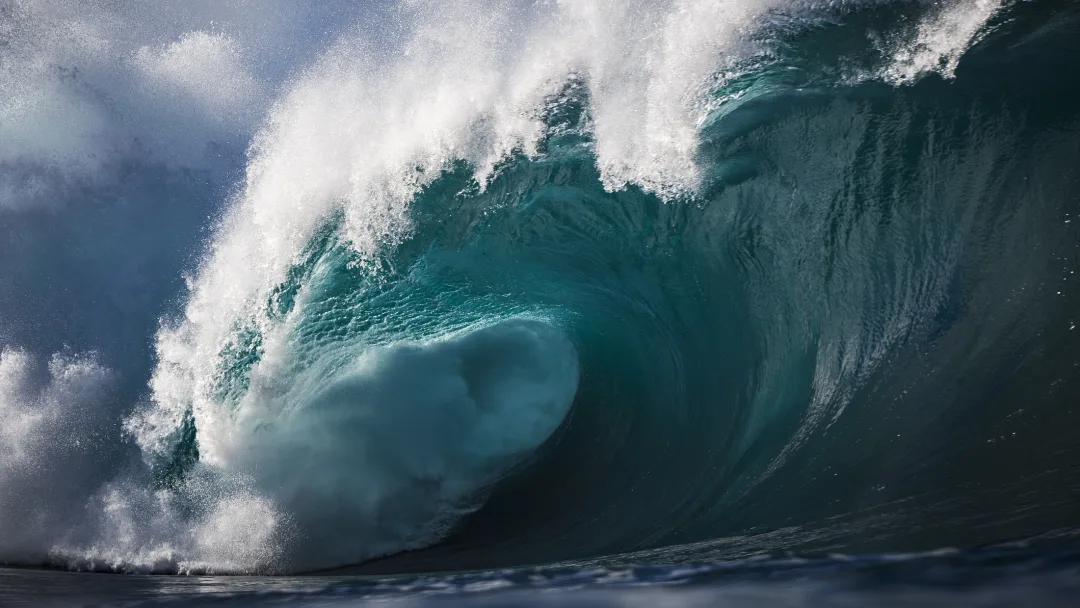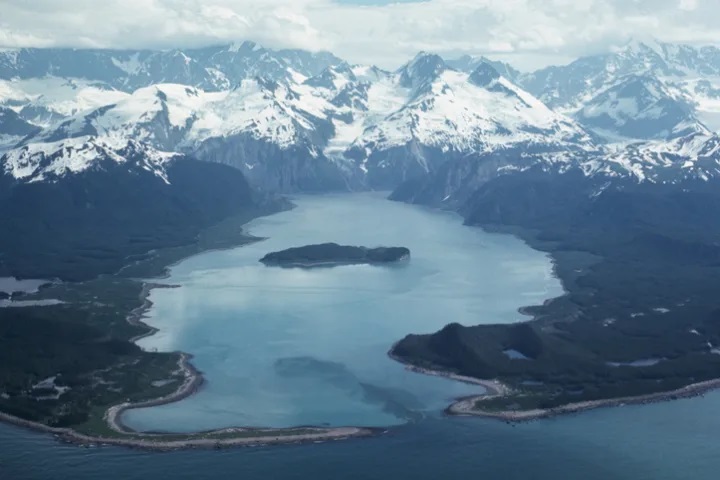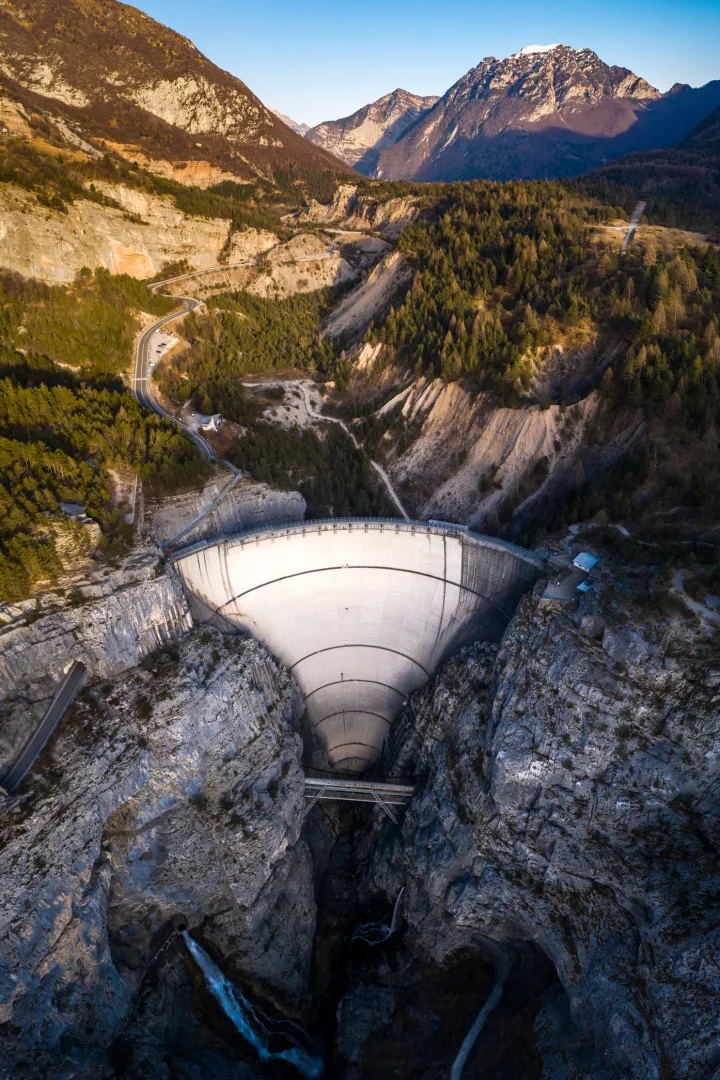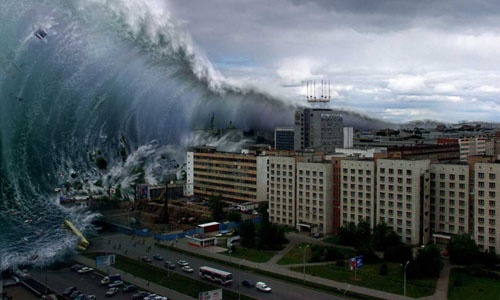8 of the Biggest Tsunamis in History
The majority of tsunamis go unnoticed. According to NOAA, tsunamis are defined as waves caused by a disturbance such as an earthquake, landslide, or volcanic eruption. They often reach only a few inches in height. However, when the inciting event is powerful enough, the consequences can be disastrous. The most powerful tsunamis can travel across the ocean as fast as jet planes and grow as tall as skyscrapers. When they reach land, they have the ability to decimate entire towns in minutes.
The tsunamis on this list aren’t necessarily the deadliest or most destructive, but they do reign supreme in one category: sheer size. Here are the world’s tallest megatsunamis.
1. Greenland’s Karrat Fjord / 295 Feet
Greenland is rarely hit by tsunamis, but in 2017 it was hit by one of the largest waves ever recorded. On June 17, a landslide on Karrat Fjord sent a 295-foot-high wall of water into the fishing village of Nuugaatsiaq. The megatsunami killed four people and destroyed 11 buildings. The event, according to experts, was caused by a warming climate thawing the glacial landscape. The mountains surrounding Karrat Fjord remain unstable, and a larger landslide-caused tsunami could be on the horizon for Greenland.
2. Ambon Island, Indonesia / 328 Feet
The first megatsunami to be detailed documented in Indonesia remains one of the largest tsunamis on record. On February 17, 1674, an earthquake struck the Maluku Islands in the Banda Sea. The earthquake caused a massive wave to crash into Ambon Island, killing over 2000 people. The water reached the top of the coastal hills on the Hitu Peninsula, indicating that the tsunami reached 328 feet.
3. Lituya Bay, Alaska // 394 Feet
The megatsunami that struck the T-shaped fjord on Alaska’s southeastern coast was most likely caused by a landslide. Tree ring counts put it in late 1853 or early 1854, and trimlines [PDF] (the point in the valley where trees were wiped out) put it at 394 feet. Throughout history, multiple megastunamis have struck Lituya Bay. Its steep walls and proximity to the Fairweather fault line make it a breeding ground for destructive waves.
4. Lituya Bay, Alaska // 490 Feet
On October 27, 1936, the second-largest tsunami in Lituya Bay history struck. Witnesses described three massive waves coming in from Crillon Inlet at speeds of up to 22 mph [PDF]. The tallest wave reached around 490 feet. The cause of the 1936 tsunami is still unknown, but an underwater rockslide is one possibility.
5. Icy Bay, Alaska // 633 Feet
On October 17, 2015, a historic megatsunami struck the remote Alaskan fjord of Icy Bay. The 633-foot wave cleared 8 square miles of forest from Wrangell St.-Elias National Park and Preserve after a landslide. Fortunately, no humans were in the area where the event occurred. Icy Bay, like Lituya Bay, has steep walls carved out by a retreating glacier, which contributed to the tsunami’s ferocity.
6. Vajont Dam, Italy // 771 Feet
This tsunami, unlike the others on this list, was caused by humans. The surrounding landscape was disturbed during the construction of the Vajont dam in northern Italy, which was the highest dam of its kind at the time of completion in 1960. The nearby Mount Toc’s face began to crack early on, and on October 9, 1963, the entire slope collapsed into the reservoir below. The landslide triggered a tsunami, which destroyed several villages in the Piave valley in less than 15 minutes. The tragedy claimed the lives of over 2000 people. The Vajont dam tsunami, at 771 feet tall, is one of history’s largest, as well as one of the deadliest man-made environmental disasters.
7. Mount St. Helens, Washington // 820 Feet
On May 18, 1980, the earthquake that triggered the infamous Mount St. Helens eruption in Washington also resulted in a tsunami. When the quake hit, the north side of the volcano collapsed into Spirit Lake. The landslide remains the largest on record, and the resulting 820-foot tsunami is the third-largest in history. It smashed into Mount Margaret’s side before crashing back down into the basin below.
8. Lituya Bay, Alaska // 1720 Feet
On July 9, 1958, the largest megatsunami ever recorded struck Alaska’s Lituya Bay. When a 7.8 magnitude earthquake struck the Fairweather fault, 90 million tons of rock were thrown into the bay. The resulting water wall reached nearly 1720 feet in the air, which is higher than Chicago’s Willis Tower. The wave killed five people, three on the shore of Khantaak Island at the entrance to Yakutat Bay and two on a boat in Lituya Bay.










